Enhancement of Dopamine Electrochemical Detection with Manganese Doped Crystalline Copper Oxide
Abstract
:1. Introduction
2. Materials and Methods
2.1. Materials
2.2. Synthesis of Copper Oxide (CuO) and Manganese Doped Copper Oxide (CuO:Mn) Samples
2.3. Characterization Methods
2.4. Modification of Screen Printed Electrodes (CuO/SPE and CuO:Mn/SPE)
3. Results and Discussion
3.1. Characterization of CuO and CuO:Mn Samples
3.1.1. Structural Characterization
3.1.2. Morphological Characterization
3.1.3. Qualitative and Quantitative Characterization of CuO:Mn
3.2. Electrochemical Detection of Dopamine
4. Conclusions
Supplementary Materials
Author Contributions
Funding
Institutional Review Board Statement
Informed Consent Statement
Data Availability Statement
Acknowledgments
Conflicts of Interest
References
- Channer, B.; Matt, S.M.; Nickoloff-Bybel, E.A.; Pappa, V.; Agarwal, Y.; Wickman, J.; Gaskill, P.J. Dopamine, Immunity and Disease. Pharmacol. Rev. 2023, 75, 618. [Google Scholar] [CrossRef] [PubMed]
- Bove, C.; Anselmi, L.; Travagli, R.A. Altered gastric tone and motility response to brain-stem dopamine in a rat model of parkinsonism. Am. J. Physiol. Gastrointest. Liver. Physiol. 2019, 317, G1–G7. [Google Scholar] [CrossRef] [PubMed]
- Bucolo, C.; Leggio, G.M.; Drago, F.; Salomone, S. Dopamine outside the brain: The eye, cardiovascular system and endocrine pancreas. Pharmacol. Ther. 2019, 203, 107392. [Google Scholar] [CrossRef] [PubMed]
- Tavares, G.; Martins, F.O.; Melo, B.F.; Matafome, P.; Conde, S.V. Peripheral Dopamine Directly Acts on Insulin-Sensitive Tissues to Regulate Insulin Signaling and Metabolic Function. Front. Pharmacol. 2021, 12, 713418. [Google Scholar] [CrossRef]
- Hou, S.; Kasner, M.L.; Su, S.; Patel, K.; Cuellari, R. Highly Sensitive and Selective Dopamine Biosensor Fabricated with Silanized Graphene. J. Phys. Chem. C 2010, 114, 14915–14921. [Google Scholar] [CrossRef]
- Dickson, D.W. Neuropathology of Parkinson disease. Parkinsonism Relat. Disord. 2018, 46 (Suppl. 1), S30–S33. [Google Scholar] [CrossRef]
- Neumann, J.; Hofmann, B.; Dhein, S.; Gergs, U. Role of Dopamine in the Heart in Health and Disease. Int. J. Mol. Sci. 2023, 24, 5042. [Google Scholar] [CrossRef]
- Klein, M.O.; Battagello, D.S.; Cardoso, A.R.; Hauser, D.N.; Bittencourt, J.C.; Correa, R.G. Dopamine: Functions, Signaling, and Association with Neurological Diseases. Cell. Mol. Neurobiol. 2019, 39, 31–59. [Google Scholar] [CrossRef]
- Vázquez-González, D.; Carreón-Trujillo, S.; Alvarez-Arellano, L.; Abarca-Merlin, D.M.; Domínguez-López, P.; Salazar-García, M.; Corona, J.C. A Potential Role for Neuroinflammation in ADHD. Adv. Exp. Med. Biol. 2023, 1411, 327–356. [Google Scholar] [CrossRef]
- Namkung, S.M.; Choi, J.S.; Park, J.H.; Yang, M.G.; Lee, M.W.; Kim, S.W. Detection of dopamine and serotonin by competitive enzyme-linked immunosorbent assay. Kor. J. Clin. Lab. Sci. 2017, 49, 220–226. [Google Scholar] [CrossRef]
- Zhao, H.-X.; Mu, H.; Bai, Y.-H.; Yu, H.; Hu, Y.-M. A rapid method for the determination of dopamine in porcine muscle by pre-column derivatization and HPLC with fluorescence detection. J. Pharmaceut. Analys. 2011, 1, 208–212. [Google Scholar] [CrossRef] [PubMed]
- Perez-Fernandez, V.; Harman, D.G.; Morley, J.W.; Cameron, M.A. Optimized Method to Quantify Dopamine Turnover in the Mammalian Retina. Anal. Chem. 2017, 89, 12276–12283. [Google Scholar] [CrossRef] [PubMed]
- Barreto, W.; Barreto, S.; Ando, R.; Santos, P.; DiMauro, E.; Jorge, T.; Raman, I.R. UV–vis and EPR characterization of two copper dioxolene complexes derived from L-dopa and dopamine. Spectrochim. Acta 2008, 71, 1419–1424. [Google Scholar] [CrossRef]
- Khattar, R.; Mathur, P. 1-(Pyridin-2-ylmethyl)-2-(3-(1-(pyridin-2-ylmethyl)benzimidazol-2-yl) propyl) benzimidazole and its copper(II) complex as a new fluorescent sensor for dopamine (4-(2-aminoethyl)benzene-1,2-diol). Inorg. Chem. Commun. 2013, 31, 37–43. [Google Scholar] [CrossRef]
- Li, H.; Li, C.; Yan, Z.; Yang, J.; Chen, H. Simultaneous monitoring multiple neurotransmitters and neuromodulators during cerebral ischemia/reperfusion in rats by microdialysis and capillary electrophoresis. J. Neurosci. Methods 2010, 189, 162–168. [Google Scholar] [CrossRef]
- Lakard, S.; Pavel, I.A.; Lakard, B. Electrochemical Biosensing of Dopamine Neurotransmitter: A Review. Biosensors 2021, 11, 179. [Google Scholar] [CrossRef]
- Magerusan, L.; Pogacean, F.; Pruneanu, S. Enhanced Acetaminophen Electrochemical Sensing Based on Nitrogen-Doped Graphene. Int. J. Mol. Sci. 2022, 23, 14866. [Google Scholar] [CrossRef]
- Tang, Z.D.; Jiang, K.; Sun, S.; Qian, S.H.; Wang, Y.H.; Lin, H.W. A conjugated carbon-dot–tyrosinase bioprobe for highly selective and sensitive detection of dopamine. Analyst 2019, 144, 468–473. [Google Scholar] [CrossRef]
- Li, Z.K.; Zheng, Y.J.; Gao, T.T.; Liu, H.; Zhang, J.; Zhou, G.W. Fabrication of biosensor based on core–shell and large void structured magnetic mesoporous microspheres immobilized with laccase for dopamine detection. J. Mater. Sci. 2018, 53, 7996–8008. [Google Scholar] [CrossRef]
- Florescu, M.; David, M. Tyrosinase-Based Biosensors for Selective Dopamine Detection. Sensors 2017, 17, 1314. [Google Scholar] [CrossRef]
- Koh, D.Y.; Kook, J.K.; Lee, S.W. Highly fluorescent oligodopamine (F-ODA) for accurate and sensitive detection of the neurotransmitter dopamine. Anal. Biochem. 2020, 591, 113571. [Google Scholar] [CrossRef] [PubMed]
- Armengaud, C.; Moisy, P.; Bedioui, F.; Devynck, J. Electrochemistry of conducting polypyrrole films containing cobalt porphyrin. J. Electroanal. Chem. 1990, 277, 197–211. [Google Scholar] [CrossRef]
- Li, X.-B.; Rahman, M.M.; Xu, G.-R.; Lee, J.-J. Highly Sensitive and Selective Detection of Dopamine at Poly(chromotrope 2B)-Modified Glassy Carbon Electrode in the Presence of Uric Acid and Ascorbic Acid. Electrochim. Acta 2015, 173, 440–447. [Google Scholar] [CrossRef]
- Uge, A.; Zeybek, D.K.; Zeybek, B. An electrochemical sensor for sensitive detection of dopamine based on MWCNTs/CeO2-PEDOT composite. J. Electroanal. Chem. 2018, 813, 134–142. [Google Scholar] [CrossRef]
- Bae, S.R.; Jeong, H.S.; Jo, S.H.; Jeon, S.W. The determination of dopamine in the presence of ascorbic acid at the modified glassy carbon electrode with phytic acid and single-walled carbon nanotubes. Bull. Korean Chem. Soc. 2007, 28, 2363–2368. [Google Scholar] [CrossRef]
- Zhang, X.J.; Zheng, J.B. High-index {hk0} facets platinum concave nanocubes loaded on multiwall carbon nanotubes and graphene oxide nanocomposite for highly sensitive simultaneous detection of dopamine and uric acid. Talanta 2020, 207, 120296. [Google Scholar] [CrossRef]
- Guo, X.; Yue, H.; Song, S.; Huang, S.; Gao, X.; Chen, H.; Wu, P.; Zhang, T.; Wang, Z. Simultaneous electrochemical determination of dopamine and uric acid based on MoS2 nanoflowers-graphene/ITO electrode. Microchem. J. 2020, 154, 104527. [Google Scholar] [CrossRef]
- Yu, G.; Xia, J.; Zhang, F.; Wang, Z. Hierarchical and hybrid RGO/ZIF-8 nanocomposite as electrochemical sensor for ultrasensitive determination of dopamine. J. Electroanal. Chem. 2017, 801, 496–502. [Google Scholar] [CrossRef]
- Kim, D.S.; Kang, E.S.; Baek, S.; Choo, S.-S.; Chung, Y.-H.; Lee, D.; Min, Y.; Kim, T.-H. Electrochemical detection of dopamine using periodic cylindrical gold nanoelectrode arrays. Sci. Rep. 2018, 8, 14049. [Google Scholar] [CrossRef]
- Fredj, Z.; Sawan, M. Advanced Nanomaterials-Based Electrochemical Biosensors for Catecholamines Detection: Challenges and Trends. Biosensors 2023, 13, 211. [Google Scholar] [CrossRef]
- Decarli, N.O.; Zapp, E.; Silveira de Souza, B.; Santana, E.R.; Winiarski, J.P.; Cruz Vieira, I. Biosensor based on laccase-halloysite nanotube and imidazolium zwitterionic surfactant for dopamine determination. Biochem. Eng. J. 2022, 186, 108565. [Google Scholar] [CrossRef]
- Pimpilova, M.; Kamarska, K.; Dimcheva, N. Biosensing Dopamine and L-Epinephrine with Laccase (Trametes pubescens) Immobilized on a Gold Modified Electrode. Biosensors 2022, 12, 719. [Google Scholar] [CrossRef]
- Álvarez-Martos, I.; Ferapontova, E.E. Electrochemical Label-Free Aptasensor for Specific Analysis of Dopamine in Serum in the Presence of Structurally Related Neurotransmitters. Anal. Chem. 2016, 88, 3608–3616. [Google Scholar] [CrossRef] [PubMed]
- Molinnus, D.; Hardt, G.; Käver, L.; Willenberg, H.S.; Poghossian, A.; Keusgen, M.; Schöning, M.J. Detection of Adrenaline Based on Bioelectrocatalytical System to Support Tumor Diagnostic Technology. Proceedings 2017, 1, 506. [Google Scholar] [CrossRef]
- Josypčuk, O.; Barek, J.; Josypčuk, B. Amperometric Determination of Catecholamines by Enzymatic Biosensors in Flow Systems. Electroanalysis 2018, 30, 1163–1171. [Google Scholar] [CrossRef]
- Winiarski, J.P.; Ferreira Tavares, B.; De Fátima Ulbrich, K.; De Campos, C.E.M.; Souza, A.A.U.; Guelli, U.; Souza, S.M.A.; Jost, C.L. Development of a multianalyte electrochemical sensor for depression biomarkers based on a waste of the steel industry for a sustainable and one-step electrode modification. Microchem. J. 2022, 175, 107141. [Google Scholar] [CrossRef]
- Yang, W.; Yu, Y.; Tang, Y.; Li, K.; Zhao, Z.; Li, M.; Yin, G.; Li, H.; Sun, S. Enhancing electrochemical detection of dopamine via dumbbell-like FePt-Fe3O4 nanoparticles. Nanoscale 2017, 9, 1022–1027. [Google Scholar] [CrossRef] [PubMed]
- Huang, Y.; Zhang, Y.; Liu, D.; Li, M.; Yu, Y.; Yang, W.; Li, H. Facile synthesis of highly ordered mesoporous Fe3O4 with ultrasensitive detection of dopamine. Talanta 2019, 201, 511–518. [Google Scholar] [CrossRef]
- Huang, Y.; Tang, Y.; Xu, S.; Feng, M.; Yu, Y.; Yang, W.; Li, H. A highly sensitive sensor based on ordered mesoporous ZnFe2O4 for electrochemical detection of dopamine. Anal. Chim. Acta. 2020, 1096, 26–33. [Google Scholar] [CrossRef]
- Fernandes, D.M.; Costa, M.; Pereira, C.; Bachiller-Baeza, B.; Rodríguez-Ramos, I.; Guerrero-Ruiz, A.; Freire, C. Novel electrochemical sensor based on N-doped carbon nanotubes and Fe3O4 nanoparticles: Simultaneous voltammetric determination of ascorbic acid, dopamine and uric acid. J. Colloid Interface Sci. 2014, 432, 207–213. [Google Scholar] [CrossRef]
- Sato, N.; Haruta, M.; Ohta, Y.; Sasagawa, K.; Ohta, J.; Pewnim, N.; Jongprateep, O. Fe2O3/MWCNTs modified microdialysis electrode for dopamine detection. Mater. Res. Express 2020, 7, 015701. [Google Scholar] [CrossRef]
- Intan, R.S.; Novi, A.; Tae, K.H. Nanomaterial-modified Hybrid Platforms for Precise Electrochemical Detection of Dopamine. BioChip J. 2019, 13, 20–29. [Google Scholar] [CrossRef]
- Swamy, B.K.; Shiprath, K.; Ratnam, K.V.; Manjunatha, H.; Janardan, S.; Ratnamala, A.; Babu Naidu, K.C.; Ramesh, S.; Suresh Babu, K. Electrochemical Detection of Dopamine and Tyrosine using Metal oxide (MO, M=Cu and Ni) Modified Graphite Electrode: A Comparative Study. Biointerface Res. Appl. Chem. 2020, 10, 6460–6473. [Google Scholar] [CrossRef]
- Zhang, H.; Zhu, Q.; Zhang, Y. One-pot synthesis and hierarchical assembly of hollow Cu2O microspheres with nanocrystals-composed porous multishell and their gas-sensingproperties. Adv. Funct. Mater. 2007, 17, 2766–2771. [Google Scholar] [CrossRef]
- Zhang, J.; Liu, J.; Peng, Q. Nearly monodisperse Cu2O and CuO nanospheres: Preparation and applications for sensitive gas sensors. Chem. Mater. 2006, 18, 867–871. [Google Scholar] [CrossRef]
- Xu, F.; Deng, M.; Li, G.; Chen, S.; Wang, L. Electrochemical behavior of cuperos oxide—Reduced grapheme oxide nanocomposite and their application in nonenzymatic hydrogen peroxide sensing. Electrochim. Acta 2013, 88, 59–65. [Google Scholar] [CrossRef]
- Miao, X.M.; Yuan, R.; Chai, Y.Q.; Shi, Y.T.; Yuan, Y.Y. Direct electrocatalitic reduction of hydrogen peroxide on Nafion and copper oxide nanoparticles modified Pt electrode. J. Electroanal. Chem. 2008, 612, 157–163. [Google Scholar] [CrossRef]
- Song, H.; Ni, Y.; Kokot, S. A novel electrochemical sensor based on the copper-doped copper oxide nano-particles for the analysis of hydrogen peroxide. Colloids Surf. A Eng. Asp. 2015, 465, 153–158. [Google Scholar] [CrossRef]
- He, G.-W.; Jiang, J.-Q.; Wu, D.; You, Y.-L.; Yang, X.; Wu, F.; Hu, Y.-J. A novel nonenzymatic hydrogen peroxide electrochemical sensor based on facile synthesis of copper oxide nanoparticles dopping into grapheme sheets @ cerium oxide nanocomposites sensitized screen printed electrode. Int. J. Electrochem. Sci. 2016, 11, 8486–8498. [Google Scholar] [CrossRef]
- Alizadeh, T.; Mirzagholipur, S. Anafion-free non-enzymatic amperometric glucose sensor based on copper oxide nanoparticles—Grapheme nanocomposite. Sens. Actuators B Chem. 2014, 198, 438–477. [Google Scholar] [CrossRef]
- Dhara, K.; Thiagarajan, R.; Nair, B.G. Highly sensitive and wide-range nonenzymatic disposable glucose sensor based on a screen printed carbon electrode modified with reduced grapheme oxide and Pd-CuO nanoparticles. Microchim. Acta 2015, 182, 2183–2192. [Google Scholar] [CrossRef]
- Yan, X.; Yang, J.; Ma, L.; Tong, X.; Wang, Y.; Jin, G.; Guo, X.Y. Size-controlled synthesis of Cu2O nanoparticles on reduced grapheme oxide sheets and their application as non-enzymatic glucose sensor materials. J. Solid State Electrochem. 2015, 19, 3195–3199. [Google Scholar] [CrossRef]
- Harris, P.A.; Taylor, R.; Minor, B.L.; Elliott, V.; Fernandez, M.; O’Neal, L.; McLeod, L.; Delacqua, G.; Delacqua, F.; Kirby, J.; et al. Highly selective and sensitive determination of dopamine by the novel molecularly imprinted poly (nicotinamide)/CuO nanoparticles modified electrode. Biosens. Bioelectron. 2015, 67, 121–128. [Google Scholar] [CrossRef]
- Reddy, S.; Swamy, B.E.K.; Jayadevappa, H. CuO nanoparticle sensor for the electrochemical determination of dopamine. Electrochim. Acta 2012, 61, 78–86. [Google Scholar] [CrossRef]
- Li, H.; Ye, L.; Wang, Y.; Xie, C. A glassy carbon electrode modified with hollow cubic cuperous oxide for voltammetric sensing of L-cysteine. Microchim. Acta 2018, 185, 5. [Google Scholar] [CrossRef]
- Gu, W.; Wang, M.; Mao, X.; Wang, Y.; Li, L.; Xia, W. A facile sensitive L-tyrosine electrochemical sensor based on coupled CuO/Cu2O nanoparticles and multi-walled carbon nanotubes nanocomposite film. Anal. Methods 2015, 7, 1313–1320. [Google Scholar] [CrossRef]
- Zhou, S.; Wei, D.; Shi, H.; Feng, X.; Xue, K.; Zhang, F.; Song, W. Sodium dodecyl benzene sulfonate functionalized grapheme for confined electrochemical growth of metal/oxide nanocomposites for sensing application. Talanta 2013, 107, 349–355. [Google Scholar] [CrossRef] [PubMed]
- Khoshhesab, Z.M. Simultaneous electrochemical determination of acetaminophen, caffeine and ascorbic acid using a new electrochemical sensor based on CuO-graphene nanocomposite. RSC. Adv. 2015, 5, 95140–95148. [Google Scholar] [CrossRef]
- Pana, O.; Leostean, C.; Soran, M.L.; Stefan, M.; Macavei, S.; Gutoiu, S.; Pop, V.; Chauvet, O. Synthesis and characterization of Fe-Pt based multi-shell magnetic nanoparticles. J. Alloy. Comp. 2013, 574, 477–485. [Google Scholar] [CrossRef]
- Macavei, S.; Toloman, D.; Stefan, M.; Popa, A.; Barbu-Tudoran, L.; Grosan, L.; Suciu, R.; Pana, O.; Balan, R. Characterization of Cu2ZnSnS4 Thin Film Deposited by Pulse Laser Deposition. In Proceedings of the 11th International Conference of Processes In Isotopes and Molecules, Cluj-Napoca, Romania, 27–29 September 2017; Volume 1917, p. 040010. [Google Scholar] [CrossRef]
- Stefan, M.; Pana, O.; Leostean, C.; Popa, A.; Toloman, D.; Macavei, S.; Lazar, D.; Barbu-Tudoran, L. Morpho-structural and photocatalytic properties of SnO2 nanoparticles. Stud. UBB Chem. 2019, 3, 99–109. [Google Scholar] [CrossRef]
- Sonia, S.; Jose Annsi, I.; Kumar, P.S.; Mangalaraj, D.; Viswanathan, C.; Ponpandian, N. Hydrothermal synthesis of novel Zn doped CuO nanoflowers as an efficient photodegradation material for textile dyes. Mater Lett. 2015, 144, 127–130. [Google Scholar] [CrossRef]
- Yildiz, A.; Horzum, S.; Serin, N.; Serin, T. Hopping conduction in In-doped CuO thin films. Appl. Surf. Sci. 2014, 318, 105–107. [Google Scholar] [CrossRef]
- Gao, W.L.; Yang, S.H.; Yang, S.g.; Lv, L.Y.; Du, Y.W. Synthesis and magnetic properties of Mn doped CuO. Phys. Lett. A 2010, 375, 180–182. [Google Scholar] [CrossRef]
- Mahomed Basith, N.; Judith Vijaya, J.; John Kennedy, L.; Bououdina, M. Structural, optical and room temperature ferromagnetic properties of Fe-doped CuO nanostructures. Phys. E Low-Dimens. Syst. Nanostructures 2013, 53, 193–199. [Google Scholar] [CrossRef]
- Mahomed Basith, N.; Judith Vijaya, J.; John Kennedy, L.; Bououdina, M. Structural, morphological, optical, and magnetic properties of Ni-doped CuO nanostructures prepared by rapid microwave combustion method. Mater. Sci. Semicond. Process. 2014, 17, 110–118. [Google Scholar] [CrossRef]
- Khalid, A.; Ahmad, P.; Alharthi, A.I.; Muhammad, S.; Khandaker, M.U.; Rehman, M.; Faruque, M.R.I.; Din, I.U.; Alotaibi, M.A.; Alzimami, K.; et al. Structural, Optical, and Antibacterial Efficacy of Pure and Zinc-Doped Copper Oxide Against Pathogenic Bacteria. Nanomaterials 2021, 11, 451. [Google Scholar] [CrossRef]
- Popa, A.; Stefan, M.; Toloman, D.; Pana, O.; Mesaros, A.; Leostean, C.; Macavei, S.; Marincas, O.; Suciu, R.; Barbu-Tudoran, L. Fe3O4-TiO2: Gd nanoparticles with enhanced photocatalytic activity and magnetic recyclability. Powder Technol. 2018, 325, 441–451. [Google Scholar] [CrossRef]
- Biesinger, M.C. Advanced analysis of copper X-ray photoelectron spectra. Surf. Interface Anal. 2017, 49, 1325–1334. [Google Scholar] [CrossRef]
- Chawla, S.K.; Sankarraman, N.; Payer, J.H. Diagnostic spectra for XPS analysis of Cu-O-S-H compounds. J. Electron Spectrosc. Relat. Phenom. 1992, 61, 1–18. [Google Scholar] [CrossRef]
- Ghijsen, J.; Tjeng, L.H.; Van Elp, J.; Eskes, H.; Westerink, J.; Sawatzky, G.A. Electronic structure of Cu2O and CuO. Phys. Rev. B 1988, 38, 11322–11330. [Google Scholar] [CrossRef]
- Svintsitskiy, D.A.; Kardash, T.Y.; Stonkus, O.A.; Slavinskaya, E.M.; Stadnichenko, A.I.; Koscheev, S.V.; Chupakhin, A.P.; Boronin, A.I. In Situ XRD, XPS, TEM, and TPR Study of Highly Active in CO Oxidation CuO Nanopowders. J. Phys. Chem. C 2013, 117, 14588–14599. [Google Scholar] [CrossRef]
- Piero, Z. Inorganic Electrochemistry Theory, Practice and Application; Royal Society of Chemistry: London, UK, 2003. [Google Scholar]
- Jin, H.; Zhao, C.Q.; Gui, R.J.; Gao, X.H.; Wang, Z.H. Reduced graphene oxide/nile blue/gold nanoparticles complex-modified glassy carbon electrode used as a sensitive and label-free aptasensor for ratiometric electrochemical sensing of dopamine. Anal. Chim. Acta. 2018, 1025, 154–162. [Google Scholar] [CrossRef]
- Xu, Y.Q.; Hun, X.; Liu, F.; Wen, X.L.; Luo, X.L. Aptamer biosensor for dopamine based on a gold electrode modified with carbon nanoparticles and thionine labeled gold nanoparticles as probe. Microchim. Acta 2015, 182, 1797–1802. [Google Scholar] [CrossRef]
- Wang, W.; Xu, G.; Cui, X.T.; Sheng, G.; Luo, X. Enhanced catalytic and dopamine sensing properties of electrochemically reduced conducting polymer nanocomposite doped with pure graphene oxide. Biosens. Bioelectron. 2014, 58, 153–156. [Google Scholar] [CrossRef]
- Weaver, C.L.; Li, H.; Luo, X.; Cui, X.T. A graphene oxide/conducting polymer nanocomposite for electrochemical dopamine detection: Origin of improved sensitivity and specificity. J. Mater. Chem. B 2014, 2, 5209–5219. [Google Scholar] [CrossRef]
- Huang, Y.; Miao, Y.E.; Ji, S.; Tjiu, W.W.; Liu, T. Electrospun carbon nanofibers decorated with Ag-Pt bimetallic nanoparticles for selective detection of dopamine. ACS Appl. Mater. Interfaces 2014, 6, 12449–12456. [Google Scholar] [CrossRef] [PubMed]
- Palanisamy, S.; Ku, S.H.; Chen, S.M. Dopamine Sensor Based on a Glassy Carbon Electrode Modified with a Reduced Graphene Oxide and Palladium Nanoparticles Composite. Microchim. Acta 2013, 180, 1037–1042. [Google Scholar] [CrossRef]
- Zhang, F.; Li, Y.; Gu, Y.; Wang, Z.; Wang, C. One-pot solvothermal synthesis of a Cu2O/graphene nanocomposite and its application in an electrochemical sensor for dopamine. Microchim. Acta 2011, 173, 103–109. [Google Scholar] [CrossRef]
- Zeng, Y.; Zhou, Y.; Kong, L.; Zhou, T.; Shi, G. A novel composite of SiO2 -coated graphene oxide and molecularly imprinted polymers for electrochemical sensing dopamine. Biosens. Bioelectron. 2013, 45, 25–33. [Google Scholar] [CrossRef] [PubMed]
- He, Q.; Liu, J.; Liu, X.; Li, G.; Chen, D.; Deng, P.; Liang, J. A Promising Sensing Platform toward Dopamine Using MnO2 Nanowires/Electro-Reduced Graphene Oxide Composites. Electrochim. Acta 2019, 296, 683–692. [Google Scholar] [CrossRef]
- Reddy, S.; Swamy, B.E.K.; Chandrashekar, B.N.; Chitravathi, S.; Jayadevappa, H. Cationic surfactants–assisted synthesis of ZnO nanoparticles and their modified carbon paste electrode for electrochemical investigation of dopamine. Anal. Bioanal. Electrochem. 2012, 4, 186–196. [Google Scholar]
- Yang, B.; Wang, J.; Duan, B.; Zhu, M.; Yang, P.; Du, Y. A three dimensional Pt nanodendrite/graphene/MnO2 nanoflower modified electrode for the sensitive and selective detection of dopamine. J. Mater. Chem. B 2015, 3, 7440–7448. [Google Scholar] [CrossRef] [PubMed]
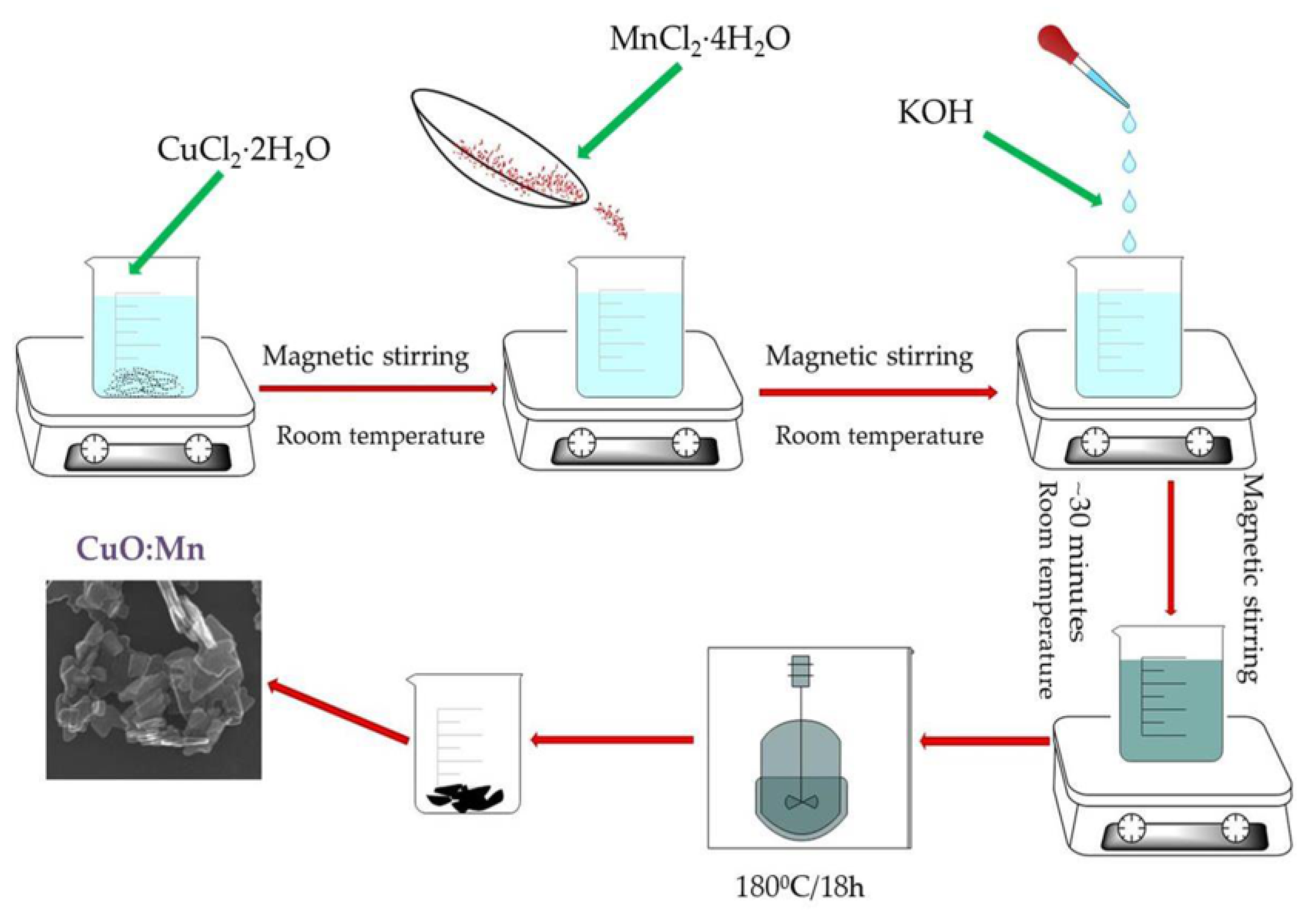
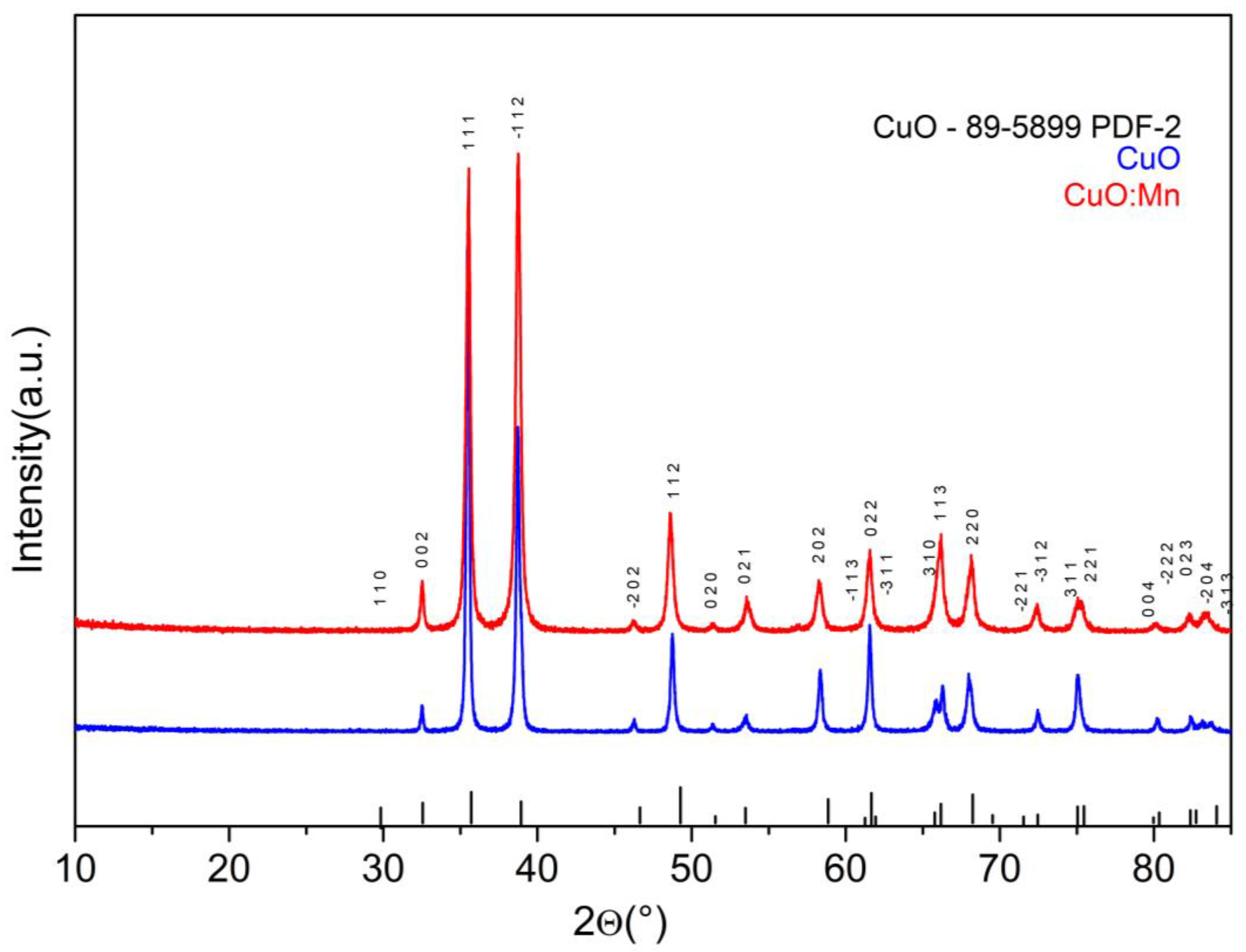


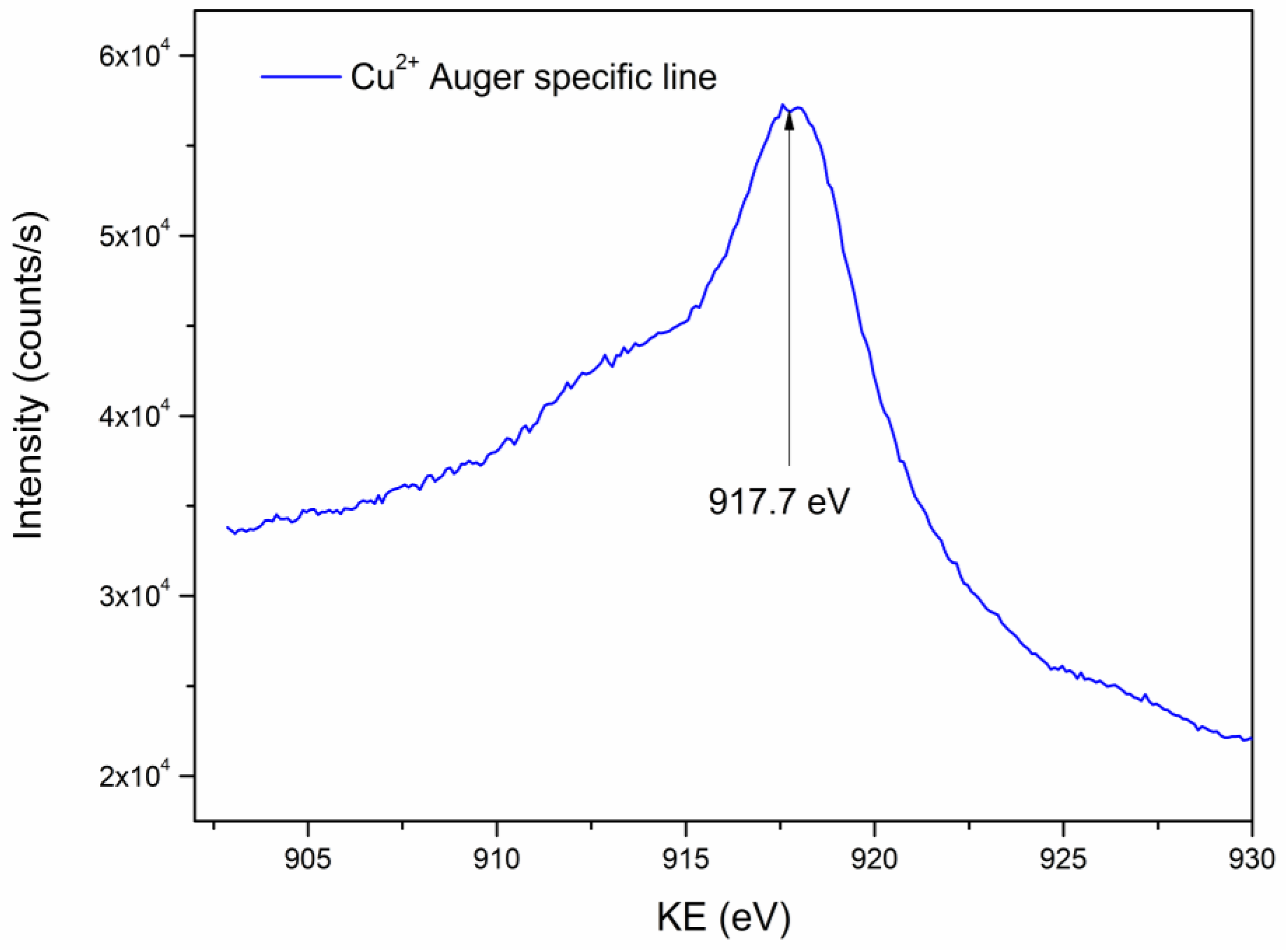


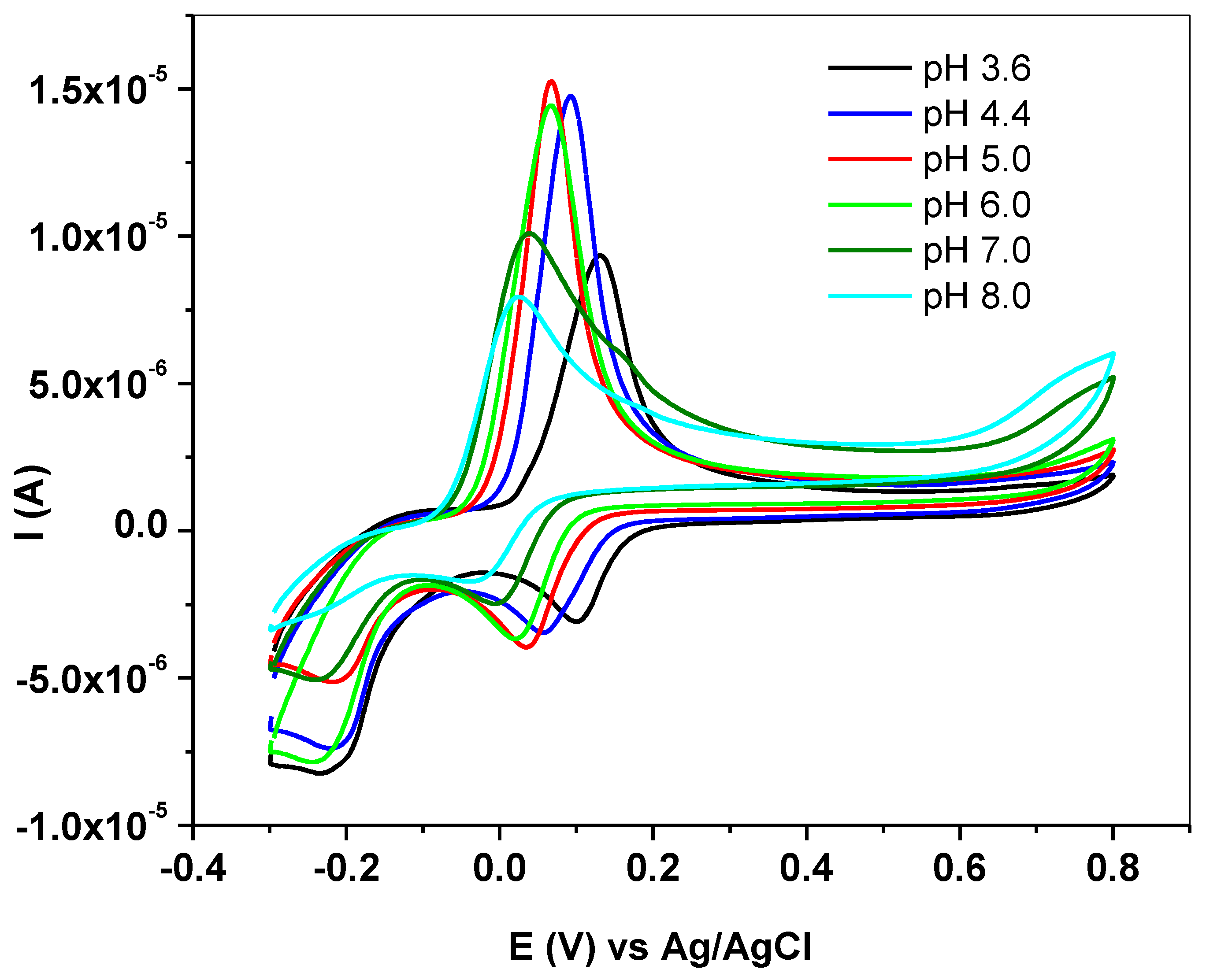
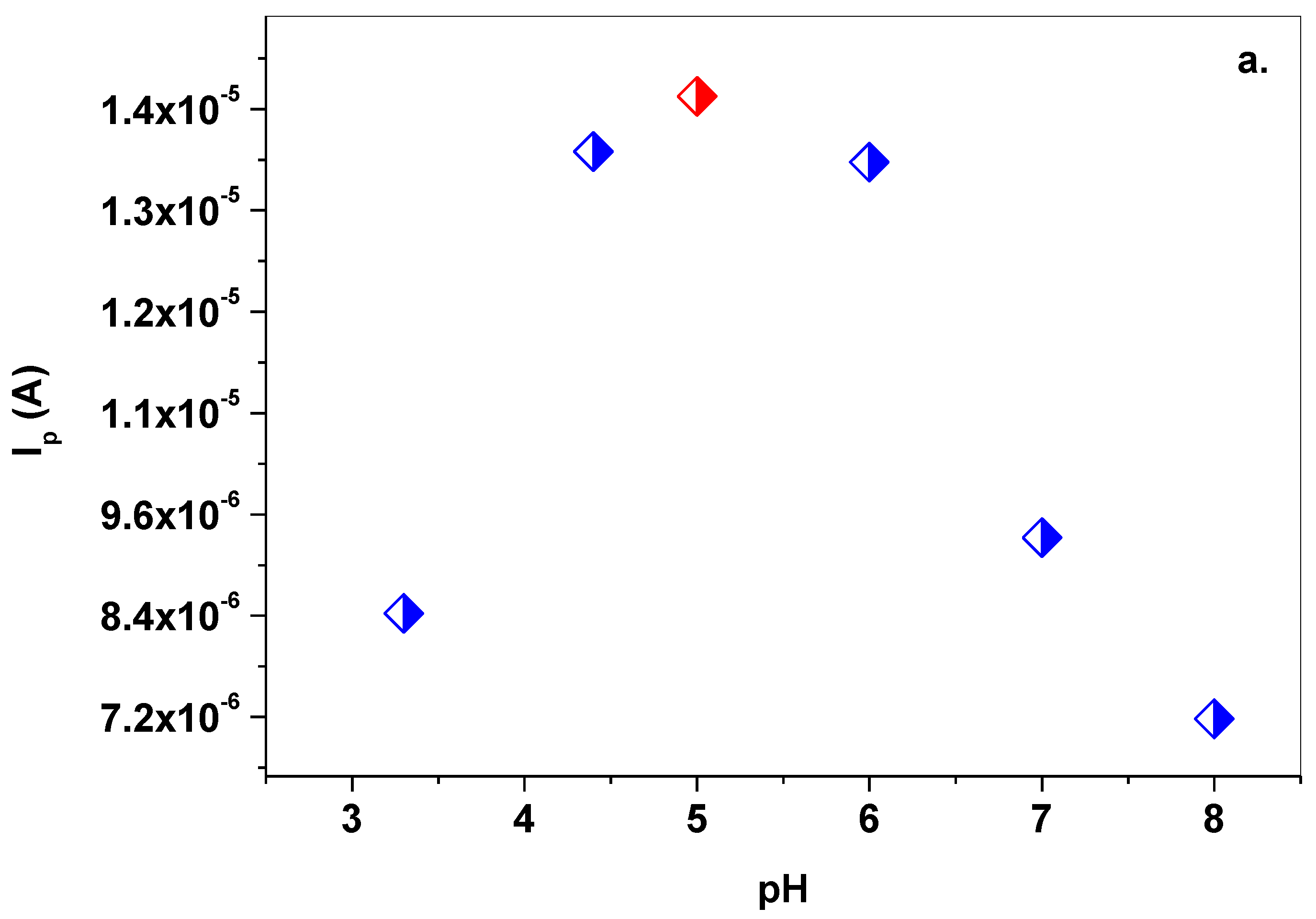
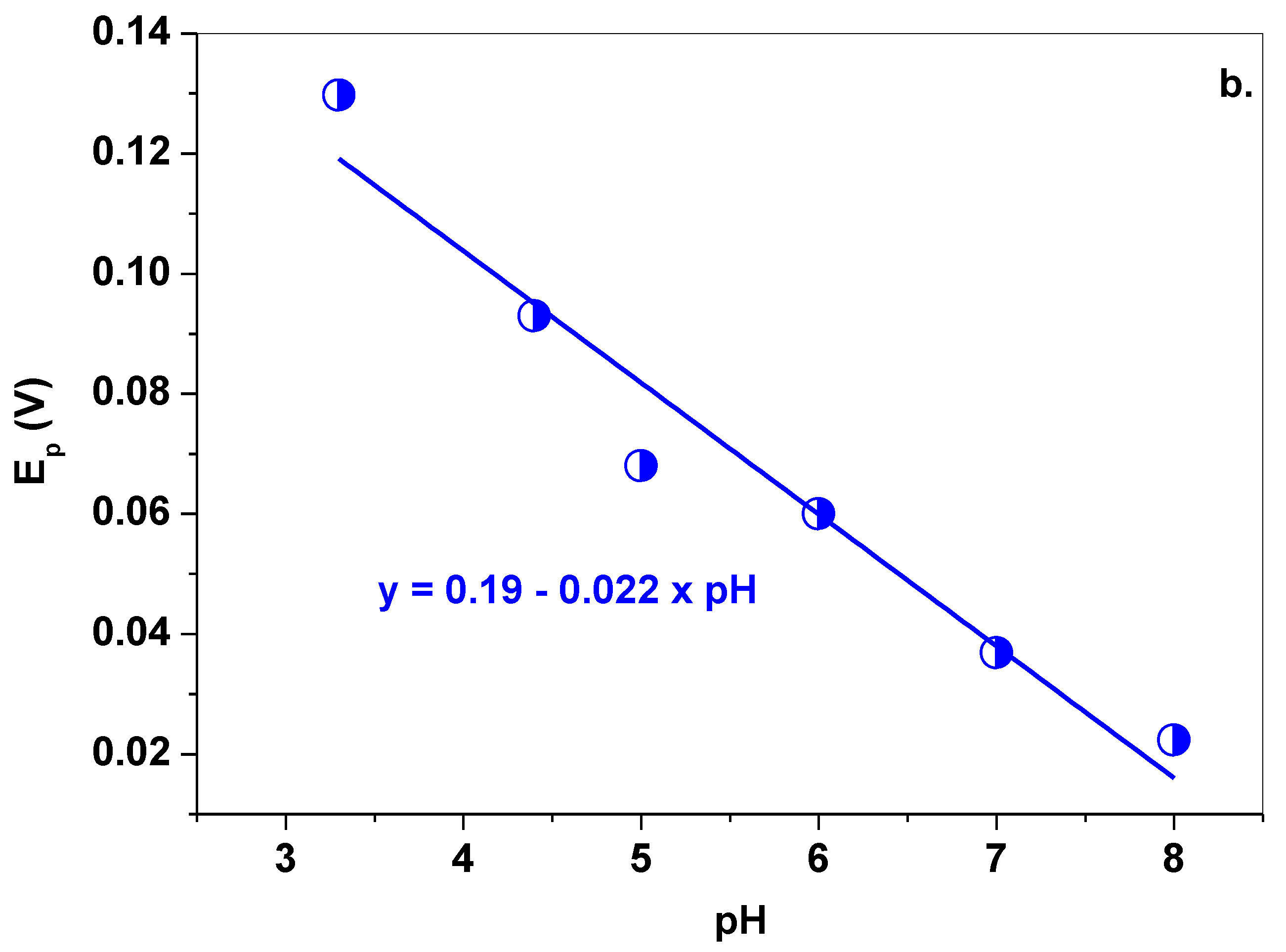

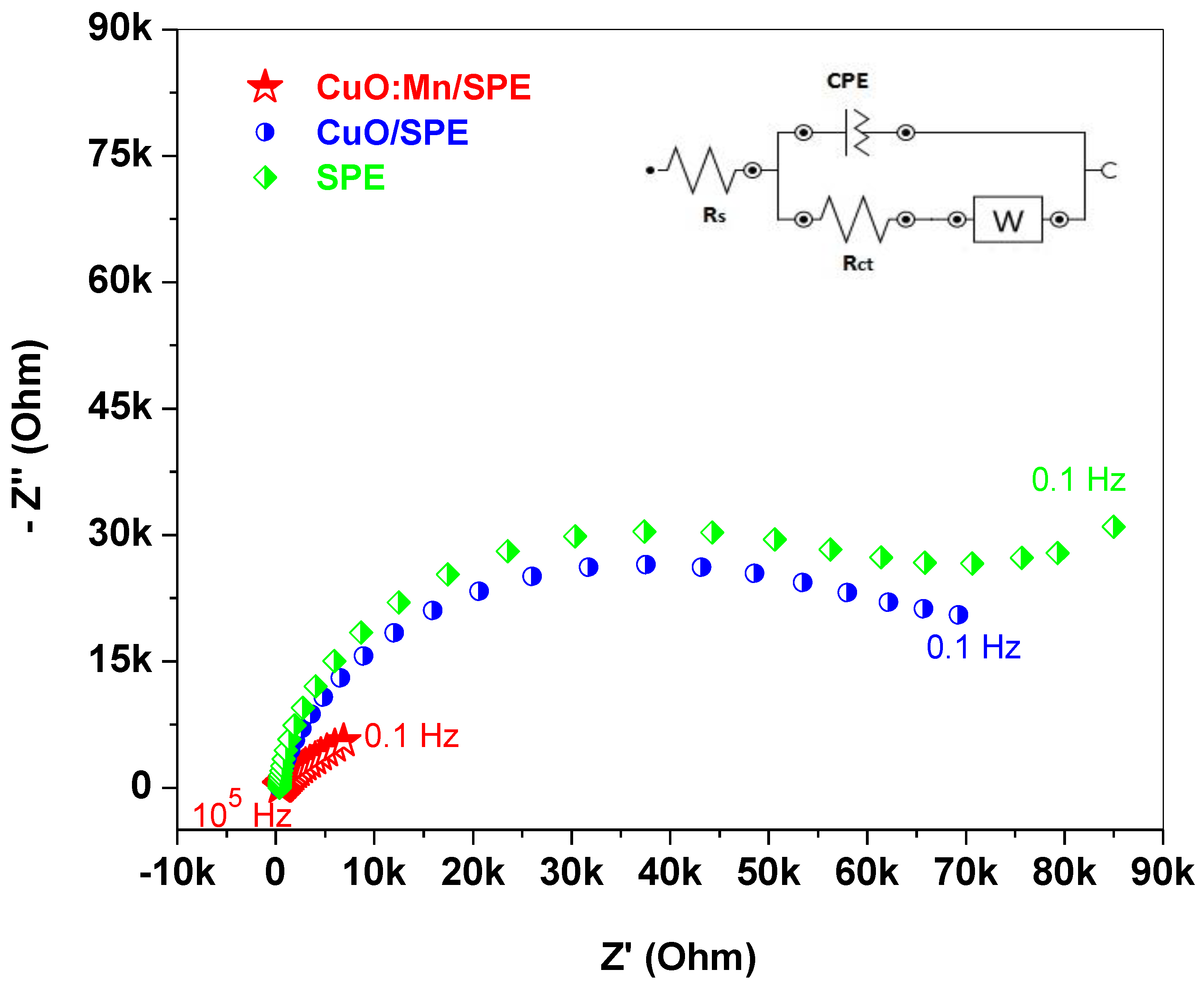
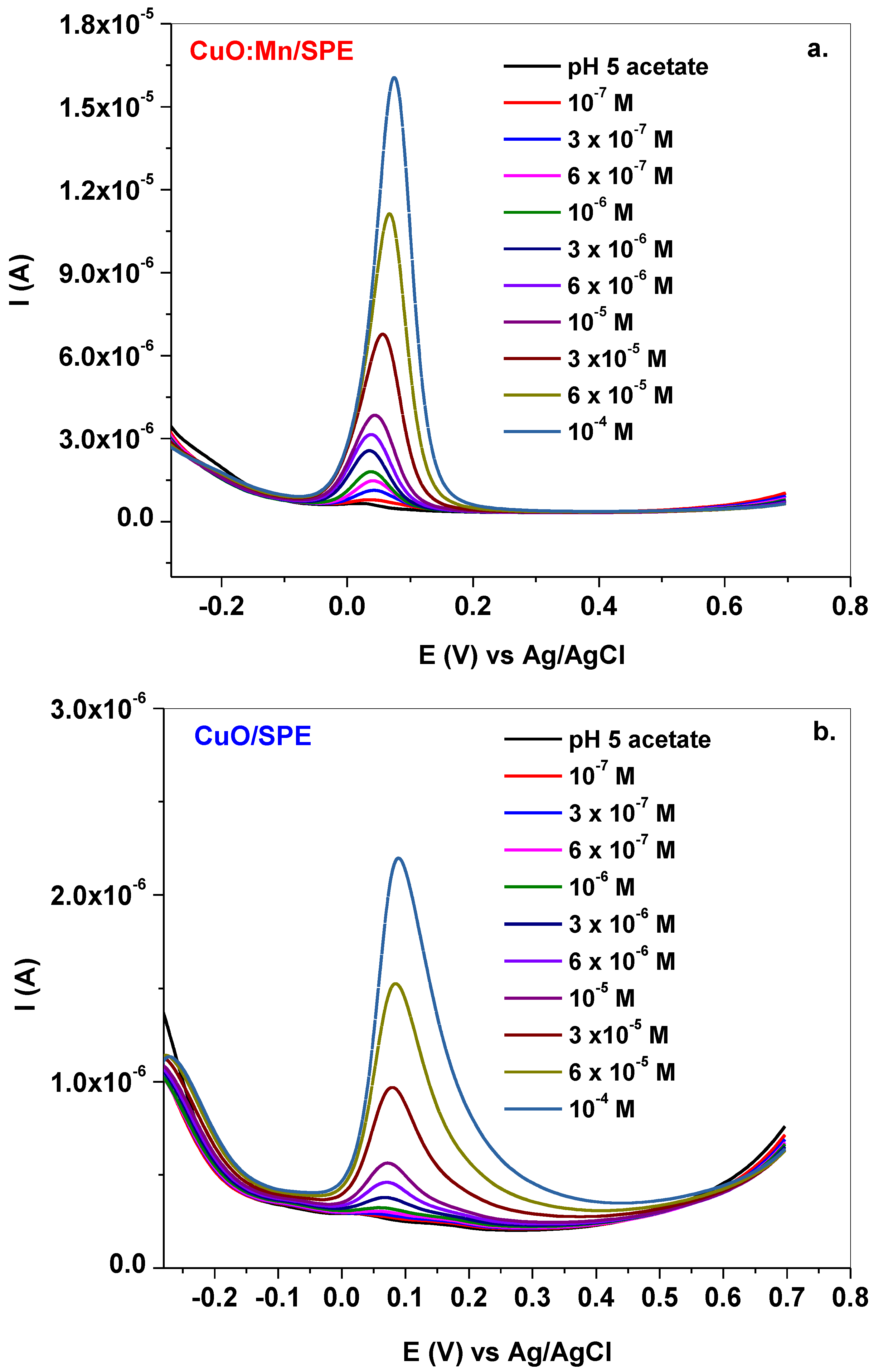


| Modified Electrode | Linear Range (µM) | LOD (nM) | Reference |
|---|---|---|---|
| DNA aptamer-GO/nile blue/GCE DNA aptamer-GO/nile blue—reduced graphene oxide/nile blue/gold nanoparticles complex GCE—glassy carbon electrode | 0.01–200 | 1 | [74] |
| Thionin/AuNPs/CNPs/Au Thionin/AuNPs/CNPs—carbon nanoparticles (CNPs) coupled to thionine labeled gold nanoparticles (AuNPs) Au—gold electrode | 30–3000 | 10 | [75] |
| Electrodeposited PEDOT/GO/GCE Electrodeposited PEDOT/GO —nanocomposite composed of conducting polymer poly (3,4-ethylenedioxythiophene) (PEDOT) doped with graphene oxide (GO) GCE—glassy carbon electrode | 0.1–175 | 39 | [76] |
| GO/PEDOT/GCE GO/PEDOT—nanocomposite of poly(3,4-ethylendioxythiophene) (PEDOT) doped with GO nanosheets GCEglassy carbon electrode | 1–40 | 83 | [77] |
| Ag-Pt/pCNFs/GCE Ag-Pt/pCN—Fs—electrospun nanoporous carbon nanofibers (pCNFs) decorated with Ag–Pt bimetallic nanoparticles GCE—glassy carbon electrode | 10–500 | 110 | [78] |
| RGO/Pd-NPs/GCE RGO/Pd-NPs—nanocomposite containing electrochemically reduced graphene oxide (RGO) and palladium nanoparticles (Pd-NPs) GCE—glassy carbon electrode | 1–150 | 233 | [79] |
| Cu2O/Graphene/GCE Cu2O/graphene—nanocomposites composed of cuprous oxide (Cu2O) and graphene GCE—glassy carbon electrode | 0.1–10 | 10 | [80] |
| GO/SiO2-MIPs/GCE GO/SiO2-MIPs—composite of SiO2 -coated GO and molecularly imprinted polymers γ- methacryloxypropyl trimethoxysilane GCE—glassy carbon electrode | 0.05–160 | 30 | [81] |
| MnO2 NWs/ERGO/GCE MnO2 NWs/ERGO—MnO2 nanowires-electrochemically reduced graphene oxide GCE—glassy carbon electrode | 0.01–0.10 | 1 | [82] |
| ZnO/CPE ZnO—zinc oxide nanoparticles CPE—carbon paste electrode | 0.1–20 | 30 | [83] |
| CuO/CPE CuO—copper (II) oxide nanoparticles CPE—carbon paste electrode | 0.1–10 | 10 | [54] |
| 3D Pt/RGO/MnO2/GCE 3D Pt/RGO/MnO2—three dimensional (3D) ternary Pt nanodendrite/reduced graphene oxide/MnO2 nanoflower GCE—glassy carbon electrode | 1.5–215.56 | 100 | [84] |
| CuO:Mn/SPE | 0.1–1 1–100 | 30.3 | current work |
Disclaimer/Publisher’s Note: The statements, opinions and data contained in all publications are solely those of the individual author(s) and contributor(s) and not of MDPI and/or the editor(s). MDPI and/or the editor(s) disclaim responsibility for any injury to people or property resulting from any ideas, methods, instructions or products referred to in the content. |
© 2023 by the authors. Licensee MDPI, Basel, Switzerland. This article is an open access article distributed under the terms and conditions of the Creative Commons Attribution (CC BY) license (https://creativecommons.org/licenses/by/4.0/).
Share and Cite
Guţoiu, S.; Pogăcean, F.; Măgeruşan, L.; Miclăuş, M.O.; Grad, O.; Pană, I.-O.; Pruneanu, S. Enhancement of Dopamine Electrochemical Detection with Manganese Doped Crystalline Copper Oxide. Coatings 2023, 13, 1014. https://doi.org/10.3390/coatings13061014
Guţoiu S, Pogăcean F, Măgeruşan L, Miclăuş MO, Grad O, Pană I-O, Pruneanu S. Enhancement of Dopamine Electrochemical Detection with Manganese Doped Crystalline Copper Oxide. Coatings. 2023; 13(6):1014. https://doi.org/10.3390/coatings13061014
Chicago/Turabian StyleGuţoiu, Simona, Florina Pogăcean, Lidia Măgeruşan, Maria Olimpia Miclăuş, Oana Grad, Ioan-Ovidiu Pană, and Stela Pruneanu. 2023. "Enhancement of Dopamine Electrochemical Detection with Manganese Doped Crystalline Copper Oxide" Coatings 13, no. 6: 1014. https://doi.org/10.3390/coatings13061014







